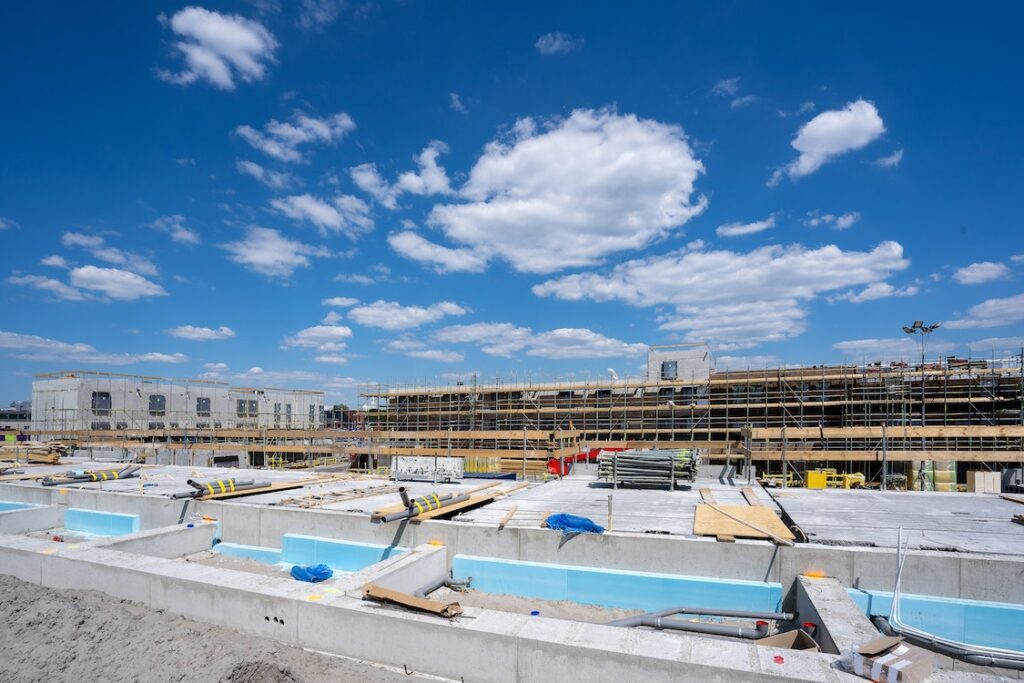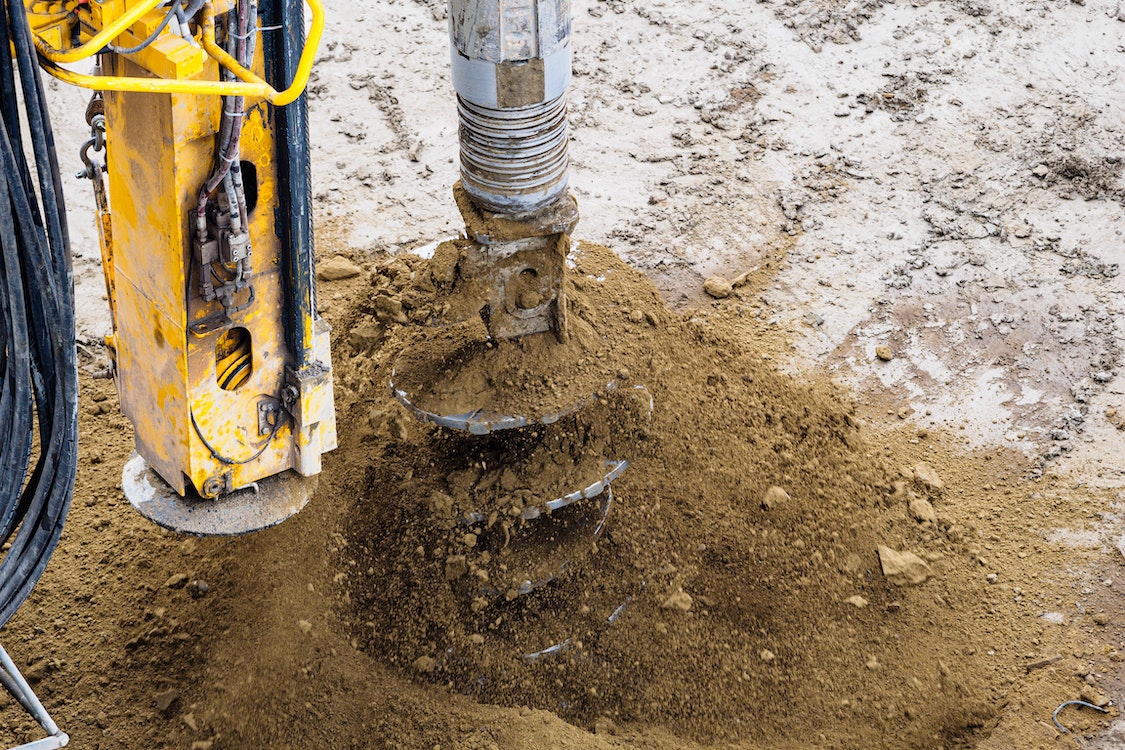
When building a new home, it’s important to choose the right foundation. This will determine how easy and affordable it is to add on and expand.
Screw piles are an excellent choice because they are easy to install and require little excavation or site clean-up. This means you can get your project done much faster than concrete piles, which need a lot of time to set up.
Cost
Screw Pile Foundations are one of the most common and reliable methods of foundation construction. They are used for a variety of different projects, including new builds, extensions and transport and communications infrastructures.
Typically, screw pile foundations are more cost-effective than other options. This is because they do not require the earthmoving equipment and labour necessary for concrete foundations. Additionally, they can be installed quickly, allowing you to complete your construction project much sooner than other types of foundations.
Another benefit of using a screw pile foundation is that it can be installed on uneven ground, and can be done without the need to dig up large areas of soil. This makes it ideal for soft or collapsing ground that is not suitable for concrete foundations.
If you are considering building a home in an area that is prone to flooding, erosion or high water table, a screw pile foundation can be the perfect solution for your build. Houses built near beaches and wetlands are particularly suited to this type of foundation, as they provide stability that will keep the property intact and resistant to natural ground movement.
A screw pile is a deep foundation structure that is driven into the ground. They are made up of a central shaft and multiple helix-shaped bearing plates that connect to a termination bracket that allows the pile to be attached to the foundation of the structure being supported.
The unique characteristics of screw piles make them very effective at dispersing load over a large area of the ground. This means that they can be very cost-effective for projects where the weight of a structure is high.
They can also be very cost-effective for projects where the soil is highly compressed or where lateral forces are significant. In many cases, helical piles can be filled with concrete once they reach their target depth to further extend their performance.
As with any other type of foundation, the cost of a screw pile foundation will depend on the size of your project and what needs to be done to prepare the site. It is therefore important to consult with a specialist contractor and have them give you an estimate of what the project will cost.
Environmental Impact

When you’re planning a construction project, it’s important to do everything you can to minimize your impact on the environment. This includes choosing the right foundation system for your needs, as well as making sure that you’re using the best materials for the job.
Screw piles are an eco-friendly foundation option that is ideal for projects that want to minimise their impact on the environment. Unlike concrete foundations, they don’t require displacing soil. This means that they have a much smaller environmental impact, as well as reducing the number of people and materials used during the installation process.
Another reason to choose screw piles is their ability to work in a variety of different ground conditions. This is especially helpful if you have a property that has different soil types. This makes it easier to install a foundation that will work for you.
In addition, screw piles can be installed in a wide range of weather conditions. This is particularly useful if you’re trying to build on a site where rain delays might cause a delay in the pouring of the concrete foundations.
There are several other benefits to using a screw pile foundation, such as reducing the cost of construction and providing a more stable structure. These foundations are also more flexible, which means they’re great for repairing or renovating the structure later on down the line.
Additionally, these foundations are much safer to install than traditional driven pile foundations. They don’t require the use of a crane or other heavy machinery, which makes them a great choice for construction sites that have restricted access or where there isn’t enough room to bring in the cranes needed for traditional foundations.
Lastly, screw piles can be removed if they are no longer needed on the site. They can also be re-used for other construction projects, which reduces the amount of material used and waste produced by the construction process.
Whether you’re a homeowner looking to start a new construction project or a contractor on a commercial project, screw pile foundations are an excellent choice for your construction needs. They’re easy to install, are a great alternative to concrete foundations and offer numerous other advantages.
Durability
If you are building a new structure or looking to add onto an existing one, Screw Pile Foundations are the best choice for your project. These piles are extremely durable and withstand both lateral loads and compressive loads. They are suitable for supporting structures of all sizes and capacities and are ideal for backyard offices, tiny houses and other small buildings where a concrete foundation might not be necessary.
These foundations are installed with a minimal impact on the landscape or local environment. They will only throw up a small amount of soil as they are drilled deeper into the ground, and will not cause damage to the surrounding property or landscaping.
This means that they are an ideal option for building decks on areas where poured concrete foundations may not be suitable, such as in a cottage country area along the Canadian Shield. ICFs can also be used as forms for pouring piers directly into the bedrock, which will then be set with epoxy.
They are also easy to install, which means that they can be installed by a team of people with specialist tools and do not require a large team of earthmovers to dig out the soil. This means that you save on labour and transport costs, as well as the carbon footprint of your project.
Another advantage of screw piles is that they can be installed quickly and with minimal noise and vibration. This is a significant benefit over traditional concrete foundations, which take longer to install and can generate considerable noise during construction.
Unlike concrete foundations, screw piles are able to penetrate into a wide range of soil types and can be installed below the frost line. This makes them a good option for sites with poor soil quality, as they are extremely resistant to ground movements and are impervious to the effects of moisture in the soil.
Screw piles are a valuable and effective means of installation and are associated with their mechanism of dispersing load, which delivers useful in-ground execution in a range of soils, including earthquake zones with liquefaction potential. They are used in many industries, including lighthouses, rail, telecommunications, roads and numerous other projects where speed of installation is critical.
Installation
Unlike other foundations, Screw Pile Foundations can be installed in a variety of soil conditions and do not require large amounts of digging to remove soil. This means they are more suitable for soft or collapsing ground and can be more cost effective in the long run.
Installation of Screw Piles can be carried out by a small team of people with specialist tools, and is therefore faster than other foundation methods. This reduces labour and transport costs as well as the time required for spoil removal and disposal. We recommend getting your supply of screw piles from Edmonton Screw Pile Pros.
When installing a Screw Pile Foundation, the first step is to decide where the piles should be placed. This is usually done during a geotechnical analysis. This is a survey that will consider the type of soil, how hard (or soft) it is and the location of the frost line. This will then determine the type and configuration of the piles that will be used, and also how deep they need to be in order to support the structure below.
Once the site is surveyed, a team of contractors will come out to install the screw piles. They will use earth moving equipment to dig out the ground, and then they will use a machine that will actually insert the screw pile into the ground.
The Screw Pile itself is made up of a steel shaft and a circular helix plate at the bottom of the shaft. This plate is designed to sit below the ground’s frost line and prevent the shaft from being pulled out of the ground. The size of the helix is determined by the soil’s load bearing capacity and the weight of the structure being supported.
Helical screw piles typically have one to six helices, depending on the application and the size of the structure that will be supported. Each helix is formed to a specific size using metal dies. This helps to minimize soil disturbance and ensures the load can be distributed evenly within the ground.
Once the helix is in place, it can then be filled with concrete. This process can take a few days, and will be done to a target depth that is determined by the geotechnical analysis. Once the concrete has cured it will be protruding out of the ground and connected to the building above by either a plate and rebar connection or a flange plate connection.
